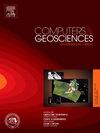High computer power has long been a critical ingredient that affects the effectiveness and efficiency of history matching. Data-driven surrogate modeling as an efficient strategy can accelerate the history-matching process by constructing machine learning-based models with high computing speed but reduced accuracy. However, the applicability of surrogate models for different history-matching problems is uncertain due to the influence of data quality and quantity, model architectures, and hyperparameters. To overcome this issue, an offline data-driven dual-surrogate framework (ODDF) that considers the prediction error of surrogate models for history matching is proposed, where one surrogate model predicts the production data of reservoirs and the other one learns the prediction error of the former surrogate. The first surrogate model considers the time-series characteristics of production data using a recurrent neural network, while the second surrogate model regards the two-dimensional spatial correlation characteristics of multivariate prediction error using a fully convolutional neural network. Furthermore, an enhanced error model is applied to incorporate the prediction error into the objective function to reduce the influence of the prediction error on inversion results. Based on this hybrid framework, one can improve the prediction accuracy of surrogate models in history matching when the architectures or hyperparameters of surrogate models are not optimal. Additionally, one can obtain satisfactory results for history matching and uncertainty quantification based on surrogate modeling. The proposed framework is validated on the history matching of two- and three-dimensional reservoir models. The results show that the proposed method is robust in constructing the surrogate models and predicting the production data of reservoirs, which improves the efficiency and reliability of history matching.


